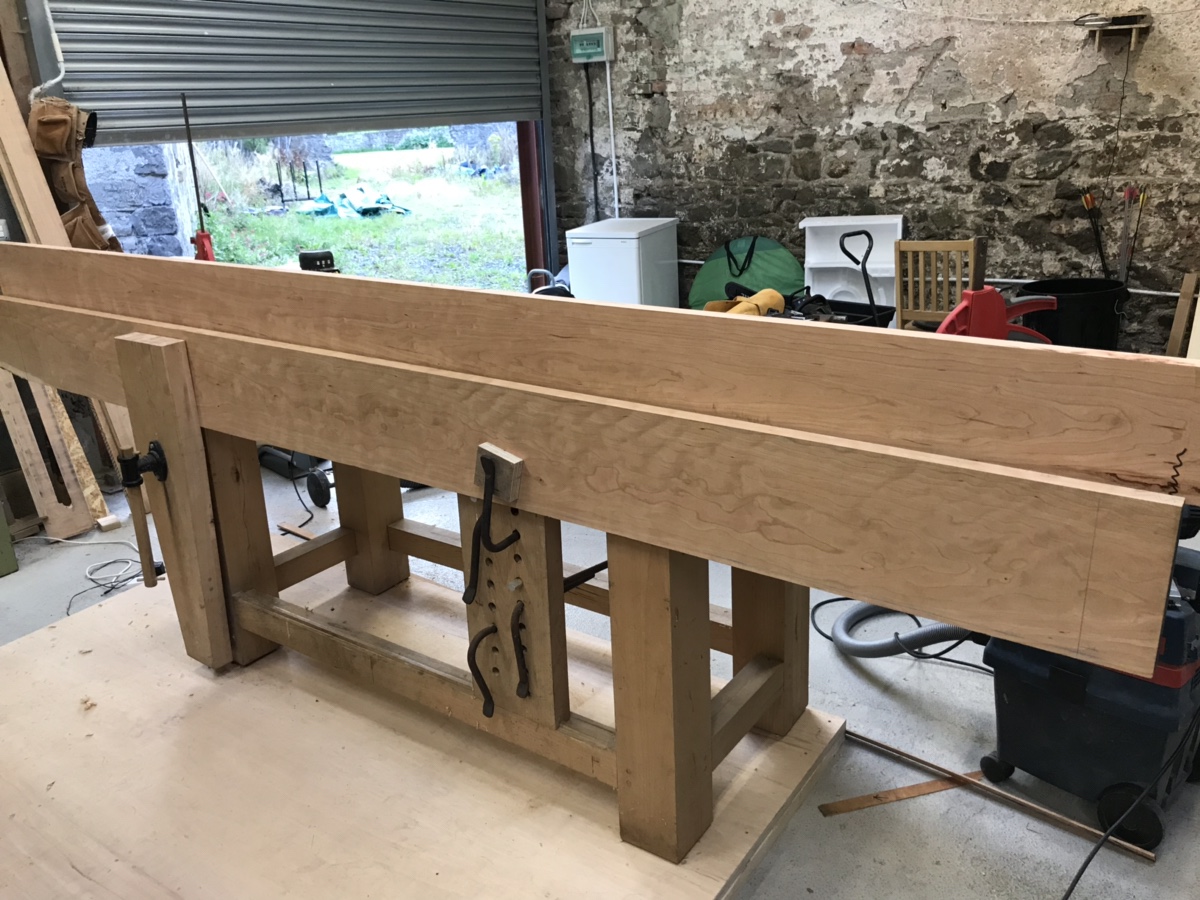I’m edge jointing some cherry and in one area I managed to plane a hump into the edge that I’m having trouble getting rid of. I tried to hone a camber into my jointer plane blade but when I hold the edge against a straight edge it’s flat.
Ok I’m using water stones. 1200 and 6000. Primary bevel is 20° and flat. Micro bevel is 25° and I spend more time at the edges to hone a camber, but it doesn’t seem to work. I tried 10 strokes at the outer edge, 7 strokes halfway, and 5 dead centre. Tested the plane, then tried that again twice plus trying to make an ‘X’ in the stone by a la Charlesworth. Blade still looks flat to me.
Any feel for where I’m going wrong? The plane sole seems flat. The plane blade isn’t kryptonite. The stones were flattened with 220 grit on plate glass.
Stumped.
Sent from my iPhone using Tapatalk
Ok I’m using water stones. 1200 and 6000. Primary bevel is 20° and flat. Micro bevel is 25° and I spend more time at the edges to hone a camber, but it doesn’t seem to work. I tried 10 strokes at the outer edge, 7 strokes halfway, and 5 dead centre. Tested the plane, then tried that again twice plus trying to make an ‘X’ in the stone by a la Charlesworth. Blade still looks flat to me.
Any feel for where I’m going wrong? The plane sole seems flat. The plane blade isn’t kryptonite. The stones were flattened with 220 grit on plate glass.
Stumped.
Sent from my iPhone using Tapatalk


































